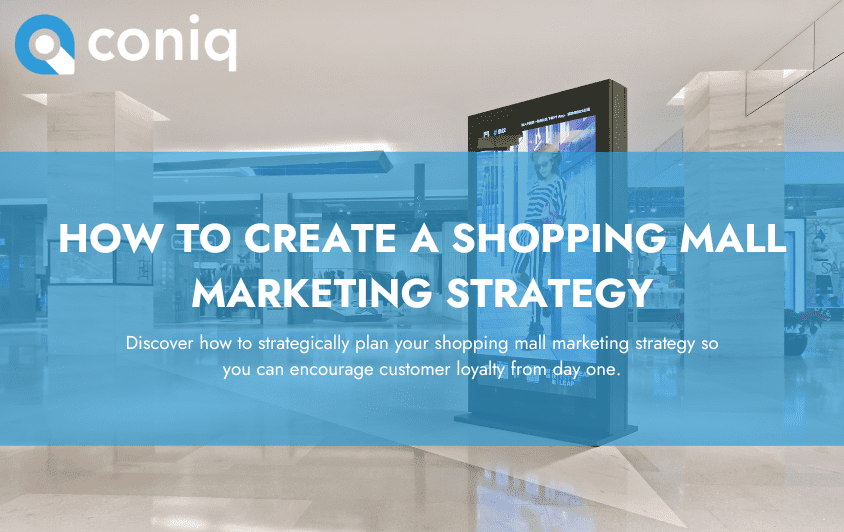The digital transformation of retail has brought a shift in customer mentality, providing retailers with several new challenges and a world of exciting opportunities. Retail destinations must learn to adapt to emerging trends, hybridize their retail offerings, redefine their business models and invest in platform solutions to help them stay ahead of their competitors. As the industry evolves, some fundamental retail trends have emerged as digital innovation continues progressing and shaping what is possible for shopping destinations. Let’s look at some of the retail trends we expect to see develop this year and find out what the future may look like for retail in 2023.
The metaverse and the future of retail experiences
The digital age has created new opportunities for retailers to revolutionize the customer experience using virtual reality and artificial intelligence. Retail automation is an area of rapid growth, expected to reach a market value of over $26 billion by 2027, arguably one of the most prominent retail trends for the year ahead. Why? Because virtual reality eliminates physical limitations, allowing customers to explore products and services as if they were in the physical store from the comfort of their homes. From engaging with virtual employees to browsing and testing 3D products before purchase, VR delivers endless possibilities for shoppers in the digital world.
Similarly, augmented reality (AR) could increase in demand technologies enabling you to visualize products in your own home using a smartphone become commonplace. One study found that 71% of consumers would shop more frequently if AR were offered, while 61% prefer retailers that use AR experiences. Often online experiences can be flat and difficult to envisage, leading to less confidence in the product and more frequent returns. These technologies will not only expand what is accessible to customers but will transform their first-hand experience, resulting in fewer returns and more satisfied customers.
Another area of digital exploration is the emergence of NFTs or non-fungible tokens. These virtual products have evolved from a niche area of technology to something more accessible to the average consumer. Last year, Adidas launched 30,000 NFTs, each giving the buyer exclusive access to physical merchandise that was set to become available in the future. The NFTs sold out within hours, and Adidas earned approximately $22 million in sales from the launch alone.
Additionally, Starbucks members will soon be able to purchase ‘limited-edition stamps’ (NFTs) through a built-in marketplace within the Starbucks Odyssey web app experience. NFT’s provide retailers with several engagement opportunities using digital stores, where users can shop for virtual goods like NFTs using cryptocurrency. With the rapid increase in omnichannel retailing, NFTs pose a powerful way to gamify your brand’s experience and access new customer engagement channels. Despite the recent volatility within these markets, we expect these technologies to recover in the long term as more consumers desire immersive, technology-led retail experiences.
Similarly, the metaverse has risen in popularity and demand in recent years as more people engage in metaverse-enabled interactions within their daily lives, from virtual gaming platforms to terrain simulations for your stationary bike ride. The number of virtual engagement models offered to customers is an area we expect to see grow in the coming years as digital environments evolve quickly to accommodate the rising demand for these technologies.
So how will this influence customer loyalty? Virtual reality will allow retailers to offer innovative rewards programs designed to engage digitally connected customers. As customer loyalty evolves, digital consumers will be rewarded with digital assets. Therefore, the metaverse promises to change consumer habits and could be a vital part of the future of retail and customer loyalty.
The contactless customer
In recent years, self-service options have become a prominent feature of the retail industry. Global brands like “Zara” implement contactless check-out systems designed to streamline the check-out process and eliminate long lines.
The adoption of omnichannel retail strategies and the emergence of mobile technology has expanded what it means to offer self-service for digitally connected customers. Today, stores use touch-screen kiosks, augmented reality tools, and gamification to immerse customers in the shopping experience. According to a Mastercard global consumer study, nearly 8 in 10 shoppers use contactless payments. Raydiant reports that 57% of consumers said they would be more likely to do business with retailers offering a contactless payment option.
When customers can shop in ways that suit their preferences, they are more likely to engage with those brands more frequently. Intelligent automation lets shoppers handle simple, transactional tasks on their own. Not only does this free up store associates, but studies show that more than two-thirds of customers (69%) want to resolve issues themselves, through self-service methods, according to Zendesk. Self-service initiatives can help stores focus on the next-generation retail experience- broadening the possibilities for customers in brick-and-mortar stores by replicating the efficient, contactless service provided by E-commerce. Consumers today value convenience and simplicity above all else, so making contactless technologies fun and user-friendly can help retailers enhance their customer experience and their customer loyalty!
A sustainable future
As online sales soared during the pandemic, so did the hunger for sustainable retail practices. Covid 19 made many shoppers re-evaluate their consumption habits and question how their retail goods were manufactured and delivered. However, the market for ethical goods has been on the rise for many years, growing fourfold in the last 20 years alone. Studies show that almost twice as many Millennials and Gen Z consumers say they will pay more for products that align with their core values, meaning that shopping malls and retailers must adopt an accountability approach to sustainability if they wish to survive the eco-transformation in years to come.
Research shows that sustainability has become a top priority among consumers, suggesting that 75% already consider sustainability an essential factor in their purchasing decisions. At the same time, 73% would change how they regularly consume to offset their environmental impact. Today’s customers desire transparency from retailers and will only shop with the brands they trust to deliver these values. This year, we expect to see eco-initiatives rise as retailers work towards reducing waste and establishing circular practices across their supply chain.
With an increasingly environmentally conscious consumer base, retail giants like IKEA have pledged to become fully circular by 2030. Starbucks continues expanding its reusable cup program, and Amazon aims to power all its operations using 100% renewable energy by 2025. It is predicted that implementing just three circular retail strategies will generate an additional $35 billion from reduced costs in consumer goods by 2030. Thus, retailers willing to embrace sustainability as a real revenue-generating opportunity seek to benefit greatly. At the same time, brands that fail to make it a priority will find themselves left behind.
However, sustainable practices have affected not only the world of E-commerce but also physical retail destinations as shopping malls across the globe continue to develop sustainable strategies for reducing waste and offsetting their carbon impact. Burwood Brickworks in Melbourne, Australia, has pioneered a new vision for eco-conscious retail destinations. The mall uses excess organic material for compost, has implemented a ‘closed loop’ water reduction system, and features a 2,000 sqm rooftop urban farm that adjacents their restaurant, reducing food transportation emissions.
In 2023, we expect to see more shopping destinations place sustainability at the heart of their planning and development projects, from green building configurations to renewable energy sources, water conservation strategies, and reduced material waste. Therefore, shopping malls have a unique opportunity to contribute to sustainability efforts in the future. This will help create healthier environments for shoppers and employees and demonstrate to customers that they align with their core values. This is a crucial component in building trust and loyalty with your customers.
As digital ecosystems continue to open up, brands must demonstrate how they can make their loyalty offerings more sustainable. For example, loyalty programs no longer rely on paper vouchers or plastic cards but on digital systems that are stored on mobile devices. Rewarding customers for green behaviors such as reusing or recycling is another way to motivate customers and build brand loyalty. The shift towards green loyalty programs is one we expect to see grow as retail innovation continues to empower shopping destinations for the future.
To stay relevant, retail destinations must be able to create intuitive, personalized experiences for brands and their shoppers. The scope of what customers expect is expanding and will continue to evolve as retail possibilities advance. So, don’t wait to take action, discover what you can do to stay ahead of your competitors, and invest in the right technology to help you do it!
Find out what Coniq is doing to innovate for 2023, and follow us as we launch even more exciting products and features this year: Coniq’s Q4 Product Release.






